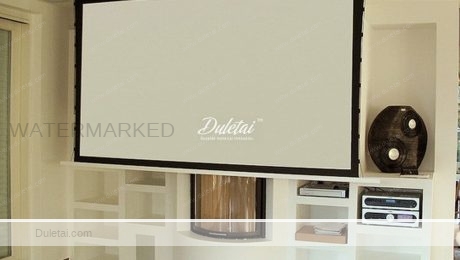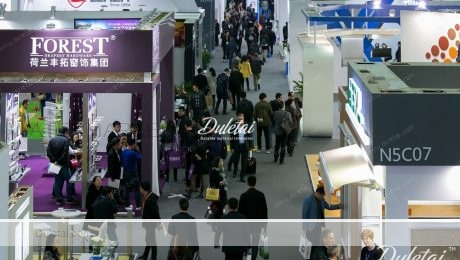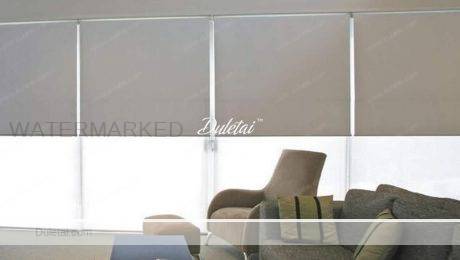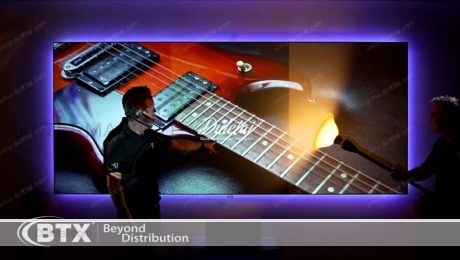Views: 137
Blackout curtain is a vailable with pencil pleat or eyelet headers, blackout curtainsare completed by thick blackout linings to block out light. These drapes fit easily onto acurtain track or curtain pole just as you would expect, and can be used in any room.
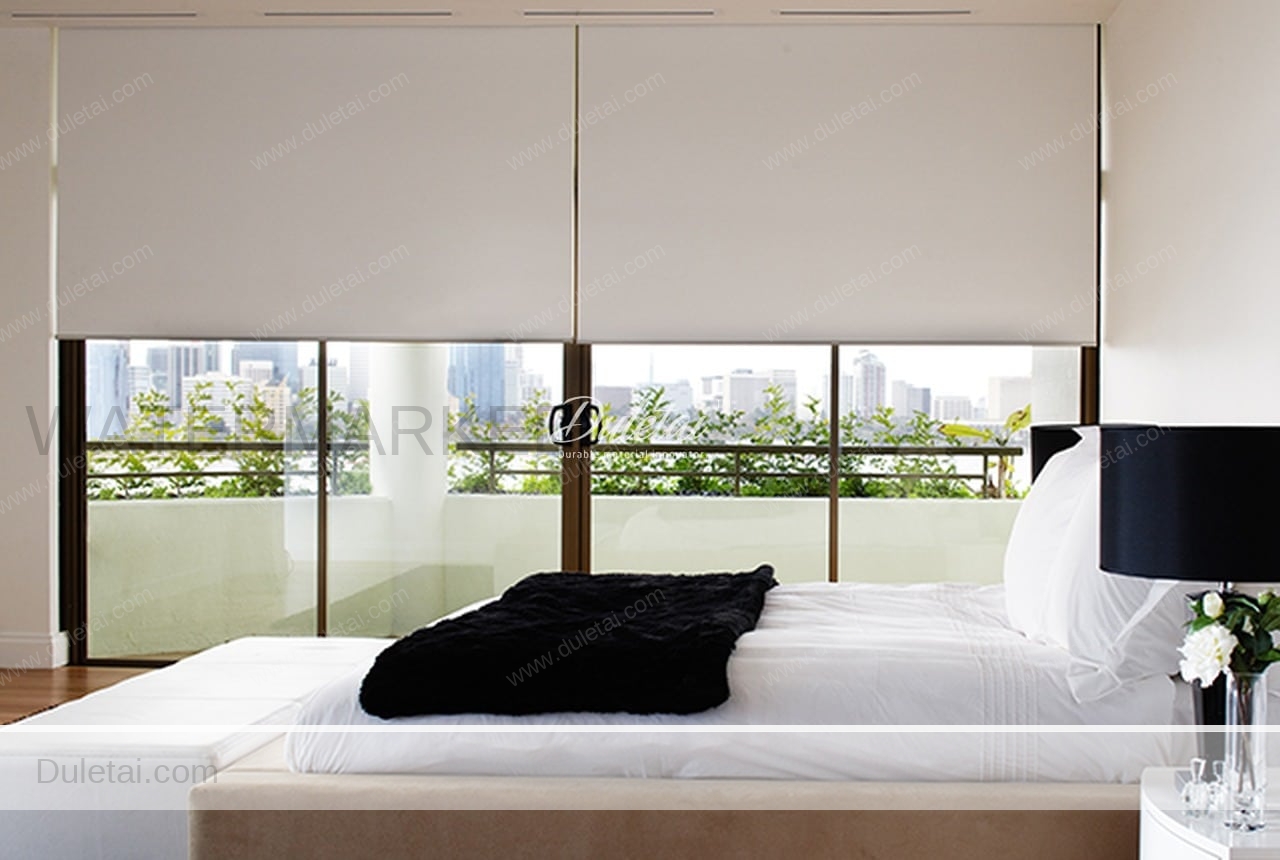
What does ‘blackout’ mean?
Blackout curtains, blackout blinds and blackout linings all perform the same task – they stop light from passing through thanks to special treatments and extra tight woven fabrics to help you control the light levels in your room.
They can be used in exactly the same way as standard curtains, blinds and linings, but are designed to block external lights from entering your living space, making them ideal for use in the bedroom.
Blackout curtain
Available with pencil pleat or eyelet headers, blackout curtains are completed by thick blackout linings to block out light. These drapes fit easily onto a curtain track or curtain pole just as you would expect, and can be used in any room.
Blackout blinds
Roman or roller blind style, blackout blinds are treated with a unique backing to stop light penetrating the fabric. Fit your blinds within a window recess and you can pair them with curtains to create a layered look with a curtain fabric of your choosing, or install outside the window alcove so the edge of the blind is wider than the window, thereby providing full width coverage.
Blackout linings
Available for pencil pleat or eyelet curtains, blackout fabric fits easily to your existing curtains to halt external lights before they disturb your peace, or can be added to new drapes as part of a fresh look. These tightly woven, thick curtain linings are ideal if you love the look of your window dressings but want to boost their performance during the summer time.
If you feel like a change but can’t find the new look you want, or your window dimensions are unusual, we also offer blackout curtain linings as part of our made to measure curtains service.
With a wealth of qualities to improve your sleep, treating your bedroom to an elegant pair of blackout curtains or investing in a smart blackout blind could have a big impact when it comes to getting your forty winks.
We tend to associate sleeping comfort with temperature, support and softness, but blackout products bring something unique to the table. Their key purpose is to provide an efficient and effective barrier to stop external light sources from disturbing your sleep, plus a range of other benefits.
Blackout products are naturally best suited for use in the bedroom where being able to control light and temperature levels is imperative for quality of sleep, but blackout fabrics are also great for the living room if street lights or vehicle headlamps persistently shine through your window.
Views: 84
When picking a projection screen, there are some key elements to consider before you acquire. These consist of acoustic infiltration, colour reproduction, comparison, weave as well as black backing.
Eventually, it’s the weave that will figure out the quality of sound penetration with a marginal amount of damping. The weave also establishes whether there will be a moiré concern with your projector.
Moiré impact is possibly the greatest challenge in designing a great acoustic projection screen. Ever wonder why individuals spend so much cash on projection screens instead of simply hanging up a bed sheet? Well, the normal weave of a bed sheet provides a patterned series of little holes that overlap with the field of pixels from a digital projector. By themselves, neither pattern is recognisable at a distance however, together, they create vertical, horizontal and diagonal lines (artefacts) that truly reduce the picture high quality.
Severe situations appear like the image is being watched via the mesh on a screen door.
Regular projection screens are designed to not show aesthetic artefacts like moiré, however it could still plague acoustic screens. A loosened weave, off-angled weave or the sieve-like pattern of a perforated screen could easily overlap with the electronic projection of 1080p or LCOS resolution creating this issue. It’s unlikely that you’ll encounter an acoustic screen that could not at the very least handle the resolution of a 720p projector, but the greater the projection resolution the greater the probability of moiré. The inescapable option will certainly be a resolution that is so fine that it will be practically identical to the remarkable lines of a cellulose picture.
Opening needle vs loom
Perforated displays utilize a strong PVC product that has been perforated with thousands of holes, generally less compared to 0.3 mm in size. This allows noise to penetrate the material while stopping light from going through to illuminate the wall surface behind it and develop a double forecasted image that will certainly spoil the discussion.
Weave, nonetheless, is made on a loom much like the way a bed sheet is woven, other than the weave pattern should go to a particular angled angle. The majority of acoustically transparent products are not THX licensed. Some individuals consider woven projection screens to be superior to the perforated products in regards to damping. Weave products (when done right) tend to be less susceptible to suffering from moiré than the garden-variety perforated screen does.
Although there are carefully made perforated acoustic projection displays that do carry a THX certification, they tend to be much too pricey, as in “if you have $10,000-$15,000 laying around to get a projection screen after that it’s not too costly” sort of means. As for the other 98% people, the weave ought to do its job completely, allowing for noise to breathe with it with less damping compared to punched material does.
That being said, there are three main problems with woven screens that can be argued– light penetration, moiré, and bad colour temperatures. Since the white part of woven projection screens is in fact clusters of white string, there is a possibility for a shift in colour temperature level leaving the screen a touch too much on the yellow, green, blue or red end of the noticeable light spectrum. When it comes to light infiltration, it develops two possible problems: double-imaging and low gain reflectivity.
A dual photo is a phenomenon created when the predicted light conveys its image on a fabric (un-backed) screen and then makes a second picture on the wall behind it that is bright enough to be seen by the customer. As a result of the offset distinction in between the projection surface area as well as the wall surface behind it, a highly disruptive dual image is made that ruins the video clip side of the presentation. The remedy is to consist of a black-backing comprised of acoustically clear black fabric. Although it does little bit versus light loss, it does avoid double-imaging.
Ultimately, moiré is caused when the weave is as well loosened or if it is woven at an incorrect angle. Either way triggers a pattern conflict with an electronic projector creating vertical, straight or angled line patterns. A lot of woven screens are made to fit 720p to 1080p resolutions however it’s worth exercising caution in buying one for the brand-new LCOS projectors. Put in the time to go over efficiency with screen maker initially.
Although many individuals lean favourably toward woven acoustic material, perforated product is not necessarily the awful choice that it’s sometimes constructed out to be. It does have its benefits. There are a few THX licensed brand names that will execute well in the majority of media space atmospheres. Also, the ordinary perforated acoustic material normally works fairly well with a 720p projector. It even has a benefit over woven projection screens in relation to not experiencing double-imaging.
The drawback is that only one of the most costly perforated products do their duties in an universally appropriate fashion. Entry-level perforated displays tend to easily succumb to moiré effect. Additionally, the common perforated product just does not supply the acoustic penetration that many individuals intend to listen to. The small openings that consist of approximately 10% of the screen surface area are exactly what is relied upon to get as much sound through as feasible, without damping way too much, yet it’s difficult not to visualize just how much recover, also prior to acoustic screening is done.
Ultimately, anticipate to pay a higher price for acoustically clear product because even more enters into its design as well as manufacturing. Aim to obtain a screen that is proportionately valued to the projector being made use of which is about 1/3 to 1/2 the projector price.
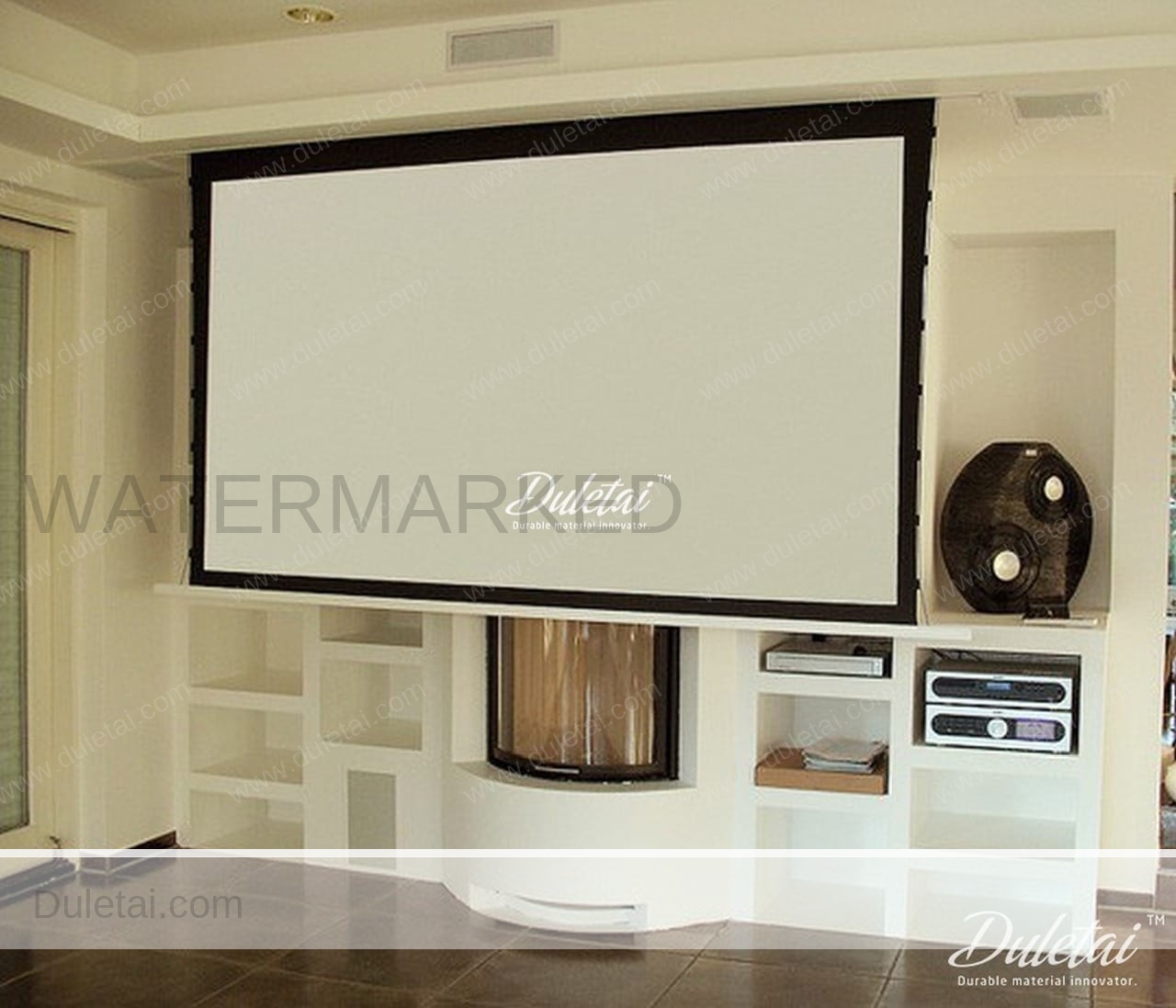
Views: 155
Blackout fabric refers to a foam-backed, opaque textile used to black out light. Blackout textiles are most frequently found in resort rooms as curtain cellular linings or drape materials, blocking a lot of the light that would certainly or else go into via a home window when the drapes are closed.
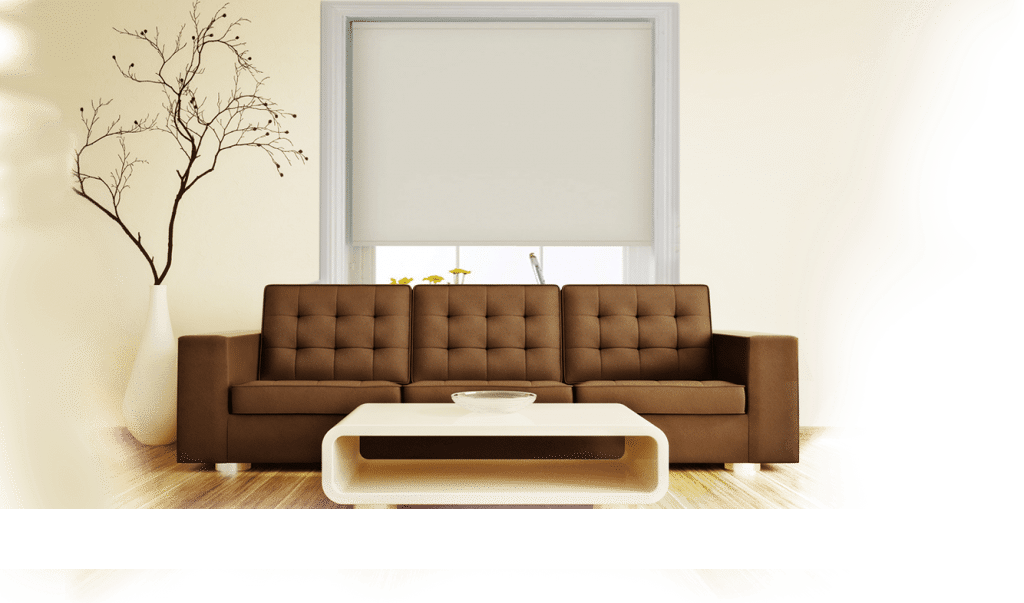
Manufacture
The process of producing power outage was developed by Baltimore-based Rockland Industries, as well as entails finishing a textile with layers of foam, or ‘passes’. A ‘2-pass’ power outage is generated by applying two passes of foam to a fabric– first, a black layer is put on the textile, then a white or light layer is used in addition to the black. A ‘3-pass’ blackout is produced by using a layer of white foam to the fabric first, then a layer of black foam adhered to by the third and also final layer of white or light-colored foam.
Utilizes
A ‘3-pass’ power outage could be used as an ornamental fabric and also power outage lining all in one material. A ‘2-pass’ can not be used in this manner, since the black foam shows up through the material side of the product. Along with obstructing light, power outage fabrics additionally protect and also havenoise-dampening top qualities, due to their density and also opacity.
Views: 43
Movie theater screen, which are made from a tightly woven fabric, either natural, such as silk, or a synthetic fiber, were excellent for use with low-power projector lamp heads and the monochromatic images that were a staple of early projected images.
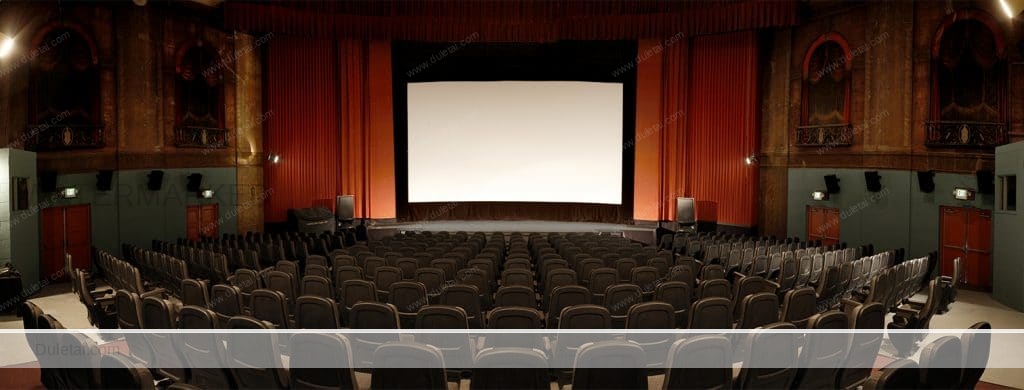
A silver display, additionally referred to as a silver lenticular display, is a sort of estimate screen that was preferred in the very early years of the motion picture industry and entered popular usage as a metonym for the movie theater market. The term cinema comes from the actual silver (or likewise reflective aluminium) material installed in the material that composed the display’s very reflective surface area.
Real metallic displays are coming back right into use in forecasting 3-D movies.
Contents
Attributes
Silver lenticular (up and down jagged) displays, which are made from a securely woven material, either natural, such as silk, or an artificial fiber, were excellent for usage with low-power projector lamp heads and also the single pictures that were a staple of early forecasted pictures. Various other silver screens are made by taking typical matte sheets and sticking silver dirt to them; the result coincides.
True hollywood, nevertheless, give narrower horizontal/vertical viewing angles as compared to their more contemporary equivalents due to their lack of ability to entirely distribute light. Furthermore, a solitary projection source often tends to over-saturate the center of the screen as well as leave the perimeters darker, depending on the setting of the customer and also exactly how well adjusted the lamp head is, a phenomenon called hot-spotting. Due to these constraints and also the proceeded technology of display materials, using silver displays in the general movement picture exhibition market has mainly been phased out.
Use in 3-D forecast
Silver lenticular screens, while no more utilized as the standard for activity photo estimate, have come back right into use as they are ideally fit for modern-day polarized 3-D projection. The percentage of light reflected from a non-metallic (dielectric) surface area varies strongly with the direction of polarisation and the angle of occurrence; this is not the instance for an electrical conductor such as a steel [1] (as an illustration of this, sunshine reflected from a straight surface such as a reflective roadway surface or water is attenuated by polarized sunglasses about guide light; this is not the situation if the light is reflected from a metal surface). As numerous 3-D modern movie theater screen technologies in usage today rely on preserving the polarisation of the photos to be presented per eye, the showing surface needs to be metallic as opposed to dielectric.
Furthermore, the nature of polarized 3-D projection requires using interposed filters, as well as the overall image is subsequently less brilliant compared to if it were being usually predicted. Silver lenticular displays assist make up by showing much more light back than a “contemporary” screen would certainly– the same objective they originally served in the very early days of movie.
Various other display kinds of movie theater screen
Each of these display types continuouslies delight in widespread popularity for both residence and also business applications:
Aluminized screen
Just like a silver screen, yet utilizing aluminium to layer the surface. Used for 3-D movies for the very same factor as hollywoods.
Pearlescent display
Comparable to a silver screen, this screen has narrow seeing angles as well as a higher gain (the action of shown light), however it does experience color-shifts to red as well as a propensity to hot place.
Glass-beaded screen
This display type additionally has a greater gain; nonetheless, the nature of its building leads to restricted seeing angles and also a loss of resolution since glass-beaded displays are retro-reflective, that is, their reflection is guided back toward the light. The glass-beaded surface area could establish obvious dark spots with age or messing up as the beads could diminish. It is preferred in the amateur market.
Gray screen
Additionally referred to as a high contrast display movie theater screen, because its objective is to increase comparison on projectors in seeing areas that are not completely dark, as the grey display soaks up ambient light that strikes it better than a white display does. Basically, the screen only reflects the certain tones of red, green, as well as blue output by a trichromatic video projector, as well as absorbs the rest. For that reason, the projected image is mirrored normally, however various other light is not. In doing so, the black level on the screen is maintained. Mainly made use of with electronic projectors in non-commercial settings.
Matte white screen
This display supplies the largest checking out angles while generating no glow and also no location. These characteristics have actually made it the most typical selection of display currently generated and has actually permitted it to come to be the show business’s requirement.
Views: 57
Screen gain could cause a projected photo to appear too intense or too dim. It could enable for hot areas that wash out the picture in certain components of the screen, or a restricted viewing angle that gives a top quality view from only certain seats in the space.
Listed below, we will certainly evaluate the technical meaning of screen gain carefully, check out exactly how it affects the watching experience in various settings, and consider the gain degrees of different screen materials. After that, we will talk about the process of selecting as well as purchasing a display to ideal meet the buyer’s seeing demands as well as places to do so, such as eBay.
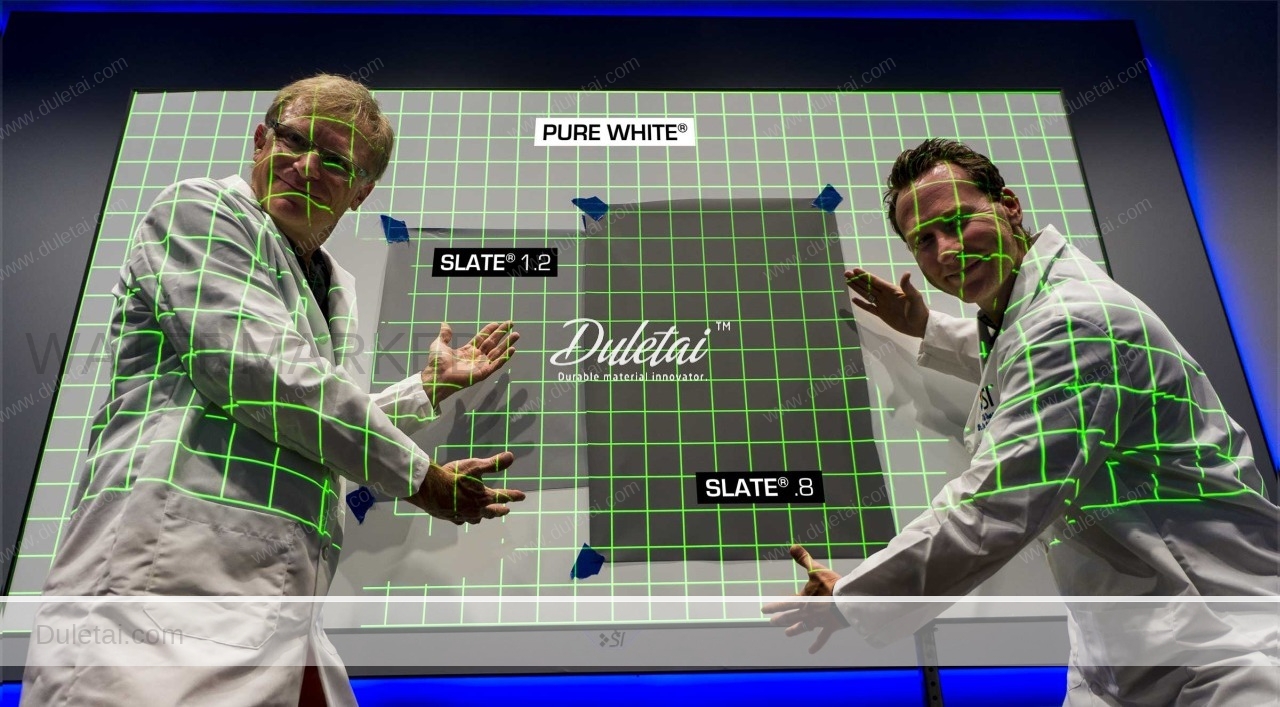
Just what is Display Gain?
Screen gain is the noticeable increase or decrease in photo brightness created by the material utilized for a forecast display. It is gauged as the ratio in between the change in brightness on a specific display as well as the standard, neutral recommendation screen.
The recommendation display is defined as a display that shows pictures at the very same brightness as a board coated with magnesium carbonate, the brilliant white chalk utilized by gymnasts and also rock climbers to dry their hands. This screen has, necessarily, a gain of 1.0 and also is the referral against which all various other displays are compared.
Reduced Gain
A screen which shows pictures less brilliantly compared to the referral display is claimed to have low gain. Its gain will certainly be related to a number much less compared to 1.0, such as 0.6 or 0.8. A display with a gain of 0.6 will be 60 percent as intense as the recommendation display.
High Gain
A screen which reveals images more vibrantly compared to the recommendation screen is claimed to have high gain. Its gain will certainly be understood a number greater compared to 1.0, such as 1.4 or 2.0. A display with a gain of 2.0 will certainly be twice as brilliant as the referral screen.
Is More vibrant Always Better?
Many individuals promptly presume that a brighter, high gain picture will certainly stand for better image top quality. This is not necessarily real for numerous reasons.
How Does Screen Gain Affect Image Top quality?
High gain screens show brighter photos but the photo high quality goes down substantially as you move far from a center-screen sight. That is to state, they have a minimal seeing angle. They could also be vulnerable to locations which are locations that show up brighter compared to the remainder of the screen.
Reduced gain displays show photos with much less illumination, which can be preferable in a room with less ambient lighting. For technical factors, the lower reflectivity additionally enables for a larger watching angle.
These vital distinctions are summarized in the table below.
Issue to Consider |
High Gain Screen |
Low Gain Screen |
|---|---|---|
Hot Spots |
More likely near center of screen. | Not likely. |
Color Shifting |
Shifts in red, green, and blue may distort images since high gain screens do not reflect all colors equally. | Color shifting not likely. |
Viewing Angle |
Narrower angle of quality image. Viewers need to be more directly in front of screen. Fewer seats will see the image as projected. | Wider angle of quality image. Viewers may be seated in a wider arc around the screen. More seats will see the image as projected. |
Ambient Light |
Compensates for higher ambient lighting in settings such as classrooms, trade shows, and conference centers. | Works well in lower ambient light settings, such as home theaters. |
In enhancement to display gain, two added scores are to be taken into consideration in assessing forecast displays:
Height Gain: Describes a display’s gain score at facility front, the brightest position.
Fifty percent Gain Watching Angle: The angle where brightness goes down 50 percent.
Commonly, a low gain display has a greater fifty percent gain watching angle, which indicates that a larger group of individuals will see the exact same view. High gain screens have lower fifty percent gain viewing angles.
All thought about, a lower gain display can be an outstanding option in a house viewing atmosphere. Screens with gain over 1.3 are not typically advised for home cinemas, but become beneficial for profession programs, classrooms, and conference centers.
Residence sports customers will certainly wish to pick displays at the greater end of the home viewing limit. No person wishes to see the Super Bowl at night.
Just how Do Different Display Materials Affect Screen Gain?
Various products influence display gain and also offer different benefits in relationship to different front- or back- estimate systems that may be selected.
Front Projection Screens
Several products are typical for front forecast displays. These come under three broad categories:
Retro-reflective, just like the reflective material utilized in traffic signs.
Angular reflective, causes light to jump off at an angle like a ping-pong sphere.
Illuminative, which show a diffuse light.
The impact of these numerous products on display gain and also various other display properties is kept in mind below.
Along with display gain, two extra ratings are to be taken into consideration in analyzing forecast screens:
Peak Gain: Describes a display’s gain ranking at center front, the brightest placement.
Half Gain Viewing Angle: The angle where brightness goes down HALF.
Generally, a reduced gain screen has a higher half gain watching angle, which suggests that a larger team of people will certainly see the exact same view. High gain displays have reduced half gain checking out angles.
All taken into consideration, a reduced gain display could be a superb choice in a house seeing environment. Displays with gain over 1.3 are not typically recommended for home movie theaters, yet become valuable for trade convention, classrooms, and also meeting centers.
Home sporting activities visitors will naturally desire to choose displays at the higher end of the house seeing limitation. Nobody desires to see the Super Dish in the dark.
Exactly how Do Various Screen Materials Affect Display Gain?
Various materials affect screen gain and also offer various advantages in regard to various front- or back- forecast systems that may be picked.
Front Forecast Screens
Several materials prevail for front projection screens. These fall under 3 broad categories:
Retro-reflective, just like the reflective product made use of in web traffic signs.
Angular reflective, triggers light to jump off at an angle like a ping-pong ball.
Illuminative, which reflect a diffuse light.
The effect of these numerous materials on display gain as well as various other display buildings is noted below.
Description |
Category |
Detail |
Screen Gain |
|---|---|---|---|
Standard White Matte Screen |
Illuminative | When choosing lower-cost motorized screens,, this is your primary option. | 1.0 |
Light Gray Matte Screen |
Illuminative | Some people think this enhances contrast and improves black levels. Others find duller whites problematic. Good with LCD – powered home projectors and often preferable withLCOS projectors.. | 0.7-1.1 |
High Contrast White Screen |
Angular | Good with DLP home projectors.. | 1.1-1.5 |
High Gain without High Contrast |
Angular | Good for rooms with higher ambient light. Base colors include white, gray, and have included pink. | 1.3-2.0 |
Glass-Bead Screen |
Retro- Reflective |
A form of retro-reflective emulsion, these screens have a rougher surface. | 2.5 |
Retro-Reflective Emulsions |
Retro- Reflective |
At the lower end, good for rooms with higher ambient light. At the higher end, extremely bright. Image artifacts become noticeable. | 2.8-9.0 |
The range of screen materials available for front projection is extensive. When deciding which is appropriate, issues to consider in addition to screen gain would include whether the screen is a permanent or motorized installation, if it is to be installed flat or with a curve, and several other factors that can affect both the functional screen gain and the viewing angle.
Rear Projection Screens
Rear projection screens may be simple screens designed to allow the projector’s light to pass through or diffuse. Others are considerably more complex technologically, employing elaborate arrays of miniscule lenses, often in combination with technologies designed to increase contrast or light diffusion. Sometimes more than one kind of lens (Fresnel and lenticular) is employed in a single screen.
Description |
Detail |
Screen Gain |
|---|---|---|
Rigid Plastic Diffusion |
Varying tints and optical characteristics are added to meet the requirements of the space where the screen will be installed. | 1.0-2.3 |
Flexible Plastic Diffusion |
These flexible screens are offered in varying tints and optical characteristics to meet the requirements of the space where the screen will be installed. | 1.0-1.8 |
Fresnel Lens with Diffusion |
Low gain, wide angle. | Varies based on diffusion coating |
Fresnel Lens with Lenticular |
Fresnel lens screens with lenticular elements are high gain. | 3.0-3.5 |
Fresnel Lens with Lenticular and High Contrast Layer |
Fresnel lens screens with lenticular elements and a high contrast layer are considered medium gain, high contrast. | 4.0 |
A wide variety of display types are offered for those who use back forecast systems, using a variety of gain levels ideal to various area setups.
Is Display Gain Different for Back Estimate?
The definition of display gain is essentially the same whether front or rear estimate is being considered. The technologies for generating the screens are different, however display gain still refers to the difference between the referral board and the light at the facility front of the screen.
Maintain Projector in Mind When Choosing a Display
Screen gain is just one factor in the regarded brightness of a viewed image. Projector illumination will likewise affect image brightness. So for a low-light home setting, a really brilliant projector could need a specifically low-gain display in settlement. A projector with a reduced light might need a higher-gain display. Conversely, if the projector to be utilized in a classroom setting did not have a brilliant light, then a teacher could want an especially high-gain display.
Exactly how to Buy Projection Screens
Locating the best projection screen is primarily an issue of deciding just what you are trying to find. Depending on the illumination and configuration of your room, you could want a display with a particularly broad viewing angle, that is to state reduced gain. Suppliers normally price displays not only for display gain, however additionally the watching angle and also the half gain viewing angle, which is the angle at which brightness is decreased by fifty percent. This is beneficial in determining in an extra functional sense just how large a viewing angle a particular screen actually provides.
Depending upon your very own level of confidence in intending a residence theater task, you might wish to speak with a professional making certain you have actually covered all the bases. Front- as well as rear-projection screens could be bought from specialty businesses that intend and install residence movie theaters, from big electronics shops, from discount stores, as well as from various on-line electrical outlets, consisting of eBay.
The best ways to Store for Forecast Screens on eBay.
Finding the appropriate forecast screen on ebay.com is mostly an issue of determining just what you are trying to find. There are constantly an excellent many outstanding screens readily available, so you might intend to do some surfing simply to arrange with your concerns.
When you’re looking for projection displays on eBay, you could begin by picking estimate screens,, which are found within the TV, Video & Residence Audio as well as Service & Industrial areas, to obtain a sense of the options. The choice is really substantial, so if you have actually currently identified producers you favor, you could restrict your selections by manufacturers.
Compare Costs
You will certainly wish to figure the expense of shipping right into the last price of your display, and also eBay offers a rate sorting option that allows you to do that. Sorting by cost additionally aids you to compare costs between sellers. Dramatically different rates in some cases represent bargains however sometimes stand for items that are not exactly what they seem to be.
Have a look at the Sellers
You may prefer to make your initial selection just from suppliers who take returns. Still, return plans vary and also each supplier define their return plan details on their product pages.
It is also important to feel comfy that you are taking care of a reliable vendor. On ebay.com, two means to confirm that a vendor is reliable is to examine the responses left by prior consumers and also to opt to buy from leading ranked vendors. These are vendors that have actually shown, over lots of purchases, that they give the leading levels of dependability as well as customer support.
Conclusion
The appropriate general photo brightness for a particular house or service viewing setting will certainly be determined as a whole by the illumination of the viewing atmosphere and the demand for pictures to be noticeable throughout a broad or slim checking out angle.
Screen gain, in addition to projector brightness, will certainly together identify just how intense the projected picture appears. Figures that aid the customer understand how vast a seeing angle gets a regular image and also at which angle the picture loses half its illumination (fifty percent gain watching angle) assist in knowing exactly how wide an area could efficiently appreciate the watching experience.
To purchase a residence or organisation projection screen that will show well on you, it is essential to take screen gain into consideration. This will certainly permit you to pick the display that provides you and your visitors the most comfortable and also appealing viewing experience.
Views: 34
Blackout cloth is our top-selling Projector Screen Material making it a budget-friendly, do-it-yourself screen building favorite! This front projection blackout fabricsurface is the standard to which all other screen surfaces are compared.
Blackout Cloth is our top-selling Projector Screen Material helping make it a budget-friendly, do-it-yourself screen building favorite! This front projection blackout fabric surface is the standard to which all other screen surfaces are compared. Blackout Cloth’s matte white surface and gain of 1.0 diffuse light in all directions so the image can be seen from any angle. Blackout Cloth material is 70% polyester, 30% cotton blend fabric that is coated with multiple layers of thin rubber and is 110″ wide. It is suitable for use in a variety of settings with accurate color and clarity in a dark viewing environment where ambient light is controlled. Blackout Cloth screen material is extremely sturdy and is best for a wooden fixed frame where it will be stretched tightly and evenly in all four directions. It also works for our tension-mounted Finished Edge Screens, Hanging & Standing Kits. You should project onto the smooth side of Blackout Cloth projector screen material. Why buy Blackout Cloth? Buy Blackout Cloth for a perfect entry-level, budget-friendly DIY projector screen!
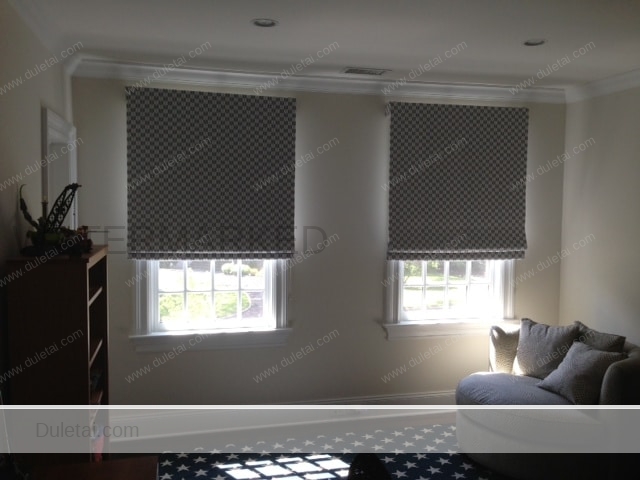
Key Material Deciding Factors
Perfect for an entry-level, budget-friendly DIY projector screen making it our top seller
The front projection standard to which all other screen surfaces are compared
Matte white with a gain of 1.0 so the image can be seen from any angle
Provides accurate color and clarity in a dark environment where ambient light is controlled
Tension-Mount/Stretch Blackout Cloth for best results
Best for an indoor, fixed frame application
70% polyester, 30% cotton with rubber coating
The smooth texture side with a rubber coating faces the audience
Ships Free! * Ships folded in a box (Weight/Dimensions).
Blackout clothships folded by default, however, select sizes have a packaging option to ship rolled on a tube for an additional fee. In the DIY market there is a wide range of comfort levels, skill sets and abilities. If you are at all concerned about folds you may want to consider ordering your material rolled, if available. Please note screens where the shortest dimension exceeds 116″ would require freight shipping, which is not available online. See our Freight Shipping Information, in the FAQ, for more information on obtaining a freight quote. * Handling Time & Delivery.
Views: 77
Outdoor projection screens can offer a lot of fun in nice weather. A projector can provide a large area for screening a film, and it can be fully customized. Projectors can be dressed up with curtains or other adornments or simply left in a minimalist style. However, it can be a daunting task to figure out how to start and to determine what is needed for construction. Getting good material for the screen is a crucial task. If the quality of the material is not up to the standards of the projector, it can degrade the picture quality. The material used may vary based on the builder’s budget, the size of screen desired, and the quality of the projector. The materials for an outdoor projection screen project can be found at big-box home improvement stores, electronics stores, and garage sales. They can be purchased in a kit or accumulated separately as one-off materials. These items and plenty of help from vendors can be found on as well. Building an outdoor projection screen can be a complicated process but, once it is built, it can provide years of backyard movie fun.
Building a Frame
The first step is to figure out the project budget and the size of the screen. As a general rule of thumb, the larger the screen, the more expensive it is. The quality of material is also a factor in budget. The projector and the picture quality it displays are big factors as well. If the projector sends out a high-definition picture, but the material used in the screen is not capable of accurately replicating a high-definition image, a potentially expensive projector can be put to waste. Once the builder has an idea in mind of what he or she can build and the size, the frame itself can take shape. Plans and ideas for frame building can quickly be found on the Internet.
Frame Materials
The frame itself can be constructed out of many different materials. These can be mixed and matched based on budget and ease of use. If the builder wants a more permanent setup, heavier frame materials, such as wood and thick metal piping, can be used to withstand the elements. Connectors can be put into place with nuts and bolts for a more secure setup as well. Of course, this is not ideal if the builder desires a temporary projector. If the builder wants to break down the setup between every use, thinner metal pipes or PVC pipes can be utilized for the frame. Lynch pins can be used to connect the corners for easy removal. Keep in mind that these temporary setups are not meant to withstand inclement weather. A strong wind can knock them over and destroy on what the builder has spent time and money.
Black Felt Edging
Black felt, while not technically part of the screen material itself, is an integral part of the outdoor screen setup. Pictures from a projector do not have clean edges as the light at the edge of the screen bleeds. If the material around the edge of the frame is light reflective, it is distracting to the eye. Black felt tape absorbs all of the light and gives the screen clean edges. This fabric can be bought in adhesive rolls, which can be placed with a steady hand and a laser level conveniently.
The Outdoor Screen
The screen itself can be made of many materials, and one of first things to consider is whether the projector used is meant to be front projecting or rear projecting. With front projection, the projector sits in front of the screen and throws out light onto a screen. With rear projection, the camera sits behind the screen. In this case, the screen must be designed to be transparent to allow light to pass through. Most temporary setups are front projection while more permanent setups may be rear projection to allow for the ability to protect the projector and any miscellaneous electronics that go along with the setup.
Material 1: Projector Screen Paint
There are many different materials that can be used for a front projection setup. One of the easiest ways is to use projector screen paint. This resembles paint that would be used to paint the walls of a house, but allows for high-contrast displays to be projected onto it. The downside of the paint is that it can be difficult for the builder to locate a space that is large and flat enough for the screen that is desired. Also, imperfections in an outdoor wall show up in the picture as well, which can be frustrating. However, for ease of use and installation, paint is a terrific option. Weather can deteriorate this paint, and reapplication may be necessary from time to time.
Material 2: Inflatable Setups
These setups can be both front and rear projection, and come in a variety of shapes and sizes. These can be found in some of the largest sizes available, and would be suited for large gatherings, such as a town picnic or a large backyard film screening. The ease of setup is also evident, as all that is needed is a pump for inflating the device and a hammer to knock stabilizing stakes into the ground. They are portable as well, allowing for easy use. If the builder is looking for an easy setup that does not require much labor besides operating an air pump or is looking to be able to move about with the theater setup easily, the inflatable screen is a great way to go.
Material 3: Blackout Cloth
In order to get the flattest, most durable, and most picture-stable screen, cloth-like materials should be used. Blackout cloth is one of the most popular options for theater screens. The material itself resembles movie theater cloth and can be cut to customizable lengths.
Material 4: Outdoor Fabrics and Tyvek
A cheaper option is outdoor fabric, which can be very durable in a more permanent setup. Usually made from Cordura, outdoor fabric can be found in the off-white coloring desired for a theater projection. Tyvek, manufactured by DuPont, is another option for outdoor fabric. While not necessarily cheaper than blackout cloth, Tyvek is a more durable product than both blackout cloth and most outdoor fabrics in an outdoor setting. The manufacturer touts it as strong, lightweight, flexible, and water-resistant, making it ideal for a more permanent outdoor setup.
Material 5: Billboard Tarps and Tarpaulins
For a project with a lower budget, vinyl billboard tarps can be used. These are usually repurposed, rather than brand new, and can be used to provide a very large white area. Although shiny vinyl is not the best material for an outdoor screen, it can be a great option for very large projection setups. Smaller tarpaulins that are usually reserved for home improvement projects can also be used, although these should only be thought of as a very cheap alternative solution. While a white or off-white tarpaulin can be found, the thick fibers and uneven surface do not make for good picture quality. If the builder has a high-end projector that puts out a high-definition quality picture, billboard tarps, and tarpaulins are not good options. A builder on a budget with a lower-end projector can find these materials sufficient for his or her needs, however.
Rear Projection Screens
The material for rear projection screens can be a little trickier. The projector sits behind the screen and projects a picture onto the back of the screen, which means that the screen must be semi-transparent. The main advantage to this is that there is not a large projector setup that takes up space in front of the screen, so there is better seating for guests. Movie watchers can spread out and view the film from all angles. The downside to rear projection is that the picture quality may not be as high as some of the front projection setups. The other major downside is that there can not be lights or even any light pollution from behind the screen, or the projection has a washed out quality to it.
Material 6: Spandex
One of the more interesting materials that can be used for rear projection is spandex. This can be stretched out and used as a great portable setup. The frames for this material usually have to be a bit stronger as the spandex needs to be stretched. Some spandex units come with frames designed to hold the taut piece of fabric.
Material 7: Trapeze
For those with a higher budget for making a rear projection screen, there is a material specifically designed for rear projection setups. The material is called Trapeze, and it is manufactured by Dazian. This is high quality, but is expensive compared to other materials listed. However, it is one of the more highly recommended fabrics for rear projection setups and provides excellent picture quality. It can be difficult to find the material, but it is well worth the search since the result is a high-end projector.
The following is a table with the materials for front projection outdoor screens, the pros and cons of each, and the link to each.
Material |
Pros |
Cons |
|---|---|---|
| Paint | Ease of installation; screen size can be whatever the builder desires | Can erode outdoors; can be difficult to find a good surface for projection |
| Inflatable | Portability, many size options; ease of setup | Cost |
| Blackout Cloth | High Quality; best picture quality | Cost; can mean cutting to size during setup |
| Outdoor Fabric and Tyvek | Durability | Not as good of picture quality as the blackout cloth; Tyvek can be expensive, especially if custom cut |
| Billboard Tarps and Tarpaulins | Durability; size; cost | Picture quality is not as good as cloth screen, even worse on home improvement tarps |
| Spandex | Cost; custom sizing | Can be rough on a frame when stretched taut |
| Trapeze | Best picture quality for rear projectors | Cost, especially for custom sizing; difficult to find |
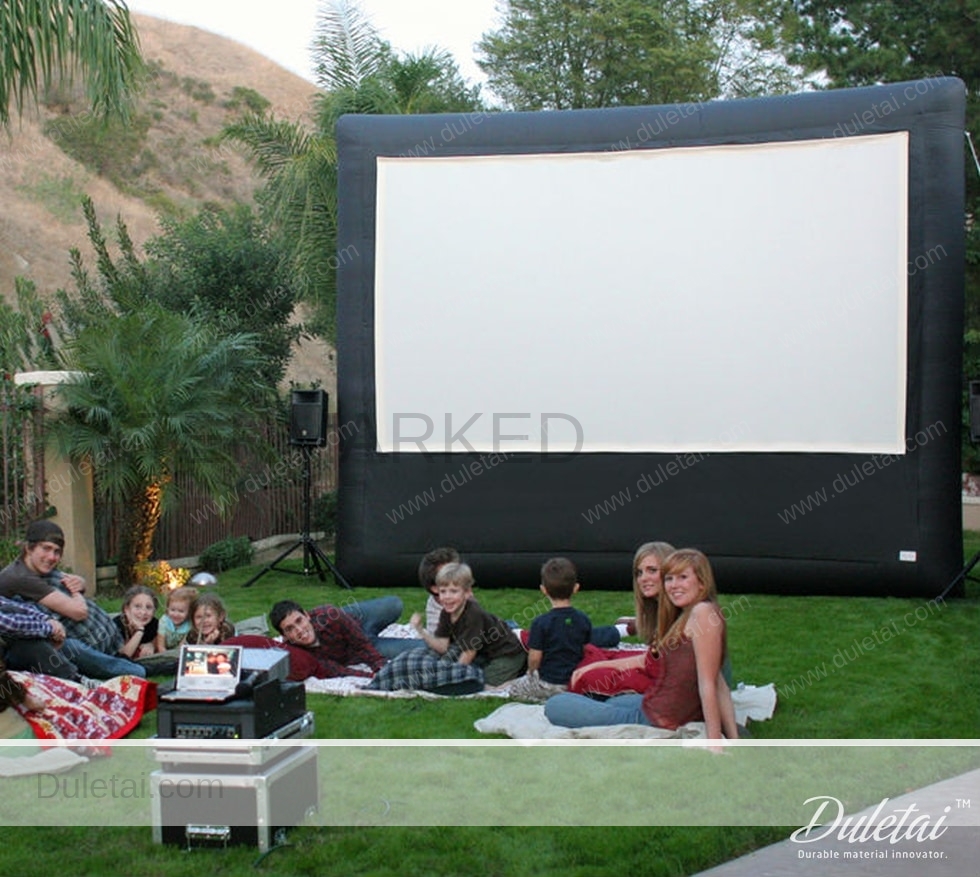
Buying outdoor projection screens
is a fantastic place to secure all of the materials needed to construct an outdoor projection screen. One of the easiest ways to find anything you might be looking for is the search bar on any page. There is also a Projector Screens and Material category that can be of use when you are starting a search and looking for ideas.
Sellers and Ratings
In addition to a wide variety of materials, manufacturers, and options, has a lot of vendors selling these various items. The ability to find an answer to any question you may have is aggregated at . Just find an item you wish to inquire about, and any of the vendors that sell the item should be willing to answer any questions you may have. In addition, you can see information about each seller in the seller ratings and reviews. After your transaction, post a review of the seller to help other buyers.
Conclusion
Outdoor screens can be used for a variety of purposes. Whether it is for a movie night with the family under the stars or a backyard barbecue with friends while the big game is on, a good screen setup can really enhance the event. Once a good frame is built, a screen can be determined. The two large factors in determining how a screen is built are the project budget and the type of projector the user plans to use. There are many different materials for front and rear projection setups, and each has its pros and cons. One of the best places to buy all of the materials needed for an outdoor projection setup is . The user is able to find multiple examples of all the materials listed, and provides the buyer with a wide selection sold by many different helpful vendors.
Views: 108
R+T Asia 2017 is the leading trade show for the Asia Pacific market, producing successful annual trade shows in Shanghai. This three-day business-to-business event will be held on March 21-23, 2017 and organized by VNU Exhibitions Asia and Messe Stuttgart. The international character of R+T Asia exhibition offers a perfect interactive platform for meeting all your key partners, potential customers, manufacturers, buyers, associations and media related to the sector of doors, gates, roller shutters, window covering, external sun shading systems and internal sun protection solutions.
External Sun Protection Systems (Roller Shutters, Window Shutters, External Venetian Blinds), Internal Sun protection Systems (Roller Blinds, Rainbow Blinds, Shangri La Blinds, Honeycomb Blinds, Vertical Blinds), Window Fabrics, Shading Systems (Awnings, Tarpaulins, Sunshades, Umbrellas, Pergolas, Tents), Venetian Blinds, Technical Textiles, Drive & Control Systems, Accessories & Fittings, Machinery, Interior Sun and Sight Protection, Automatic Doors, Industrial Doors, Entry Doors, Garage Doors, Drive & control devices, Accessories and fittings for door and gates, Machinery for doors and gates.
At the SNIEC Exhibition Center, the most modern in China, Messe Stuttgart, in cooperation with VNU Exhibitions Asia, organizes the R+T Asia, the trade fair for roller shutters, sun protection, roll and garage doors. The focus of the event is the demand from the markets of Asia/Pacific, as well as the import of foreign and export of Chinese quality products. The visitors will find a variety of new technologies and innovative products. The R+T Asia is considered the only exhibition of its kind in Asia.
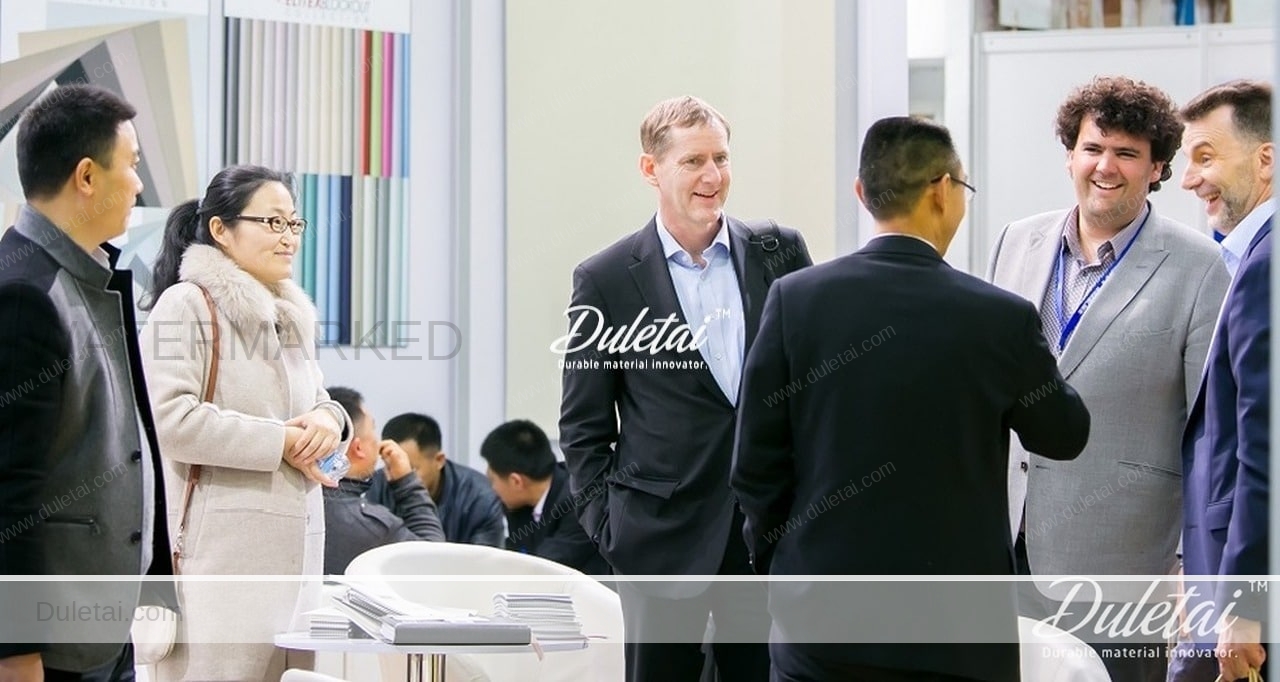
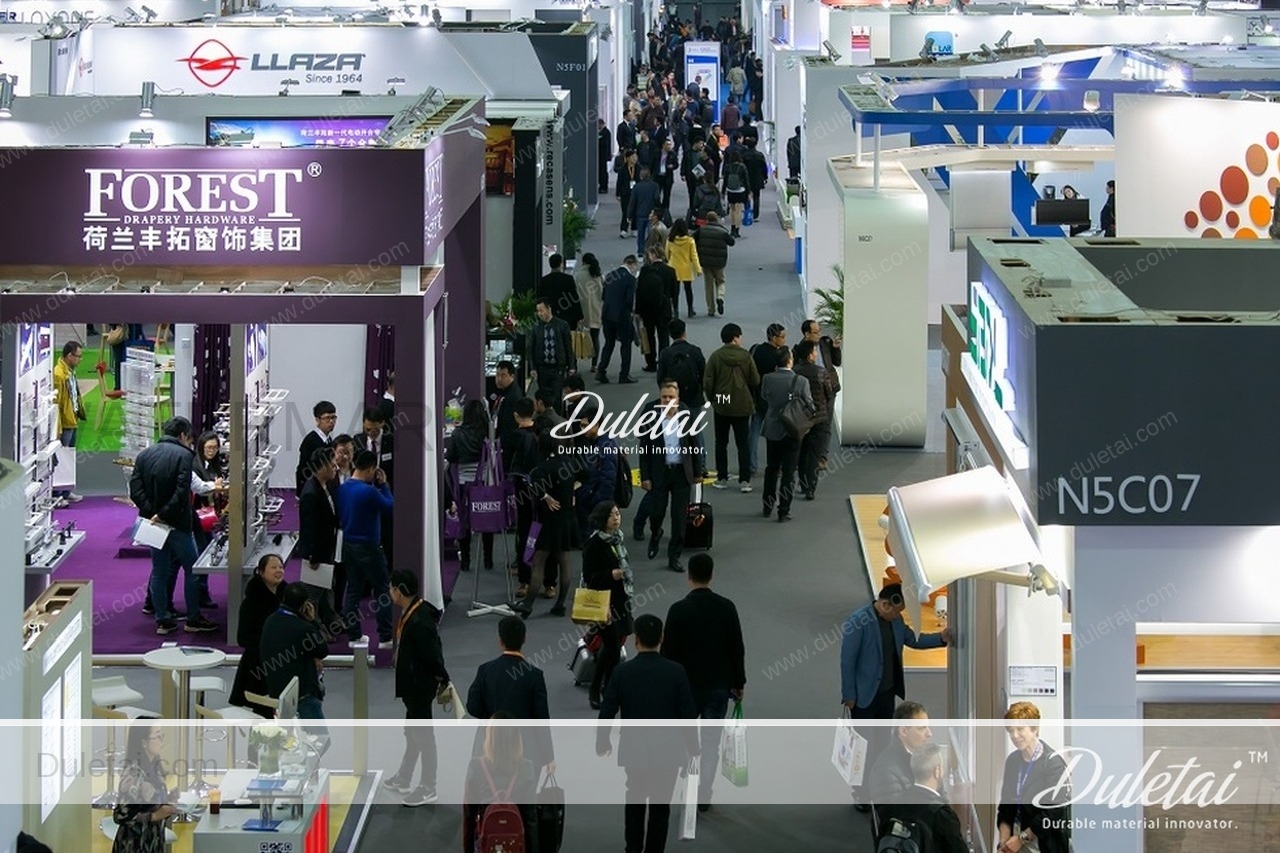
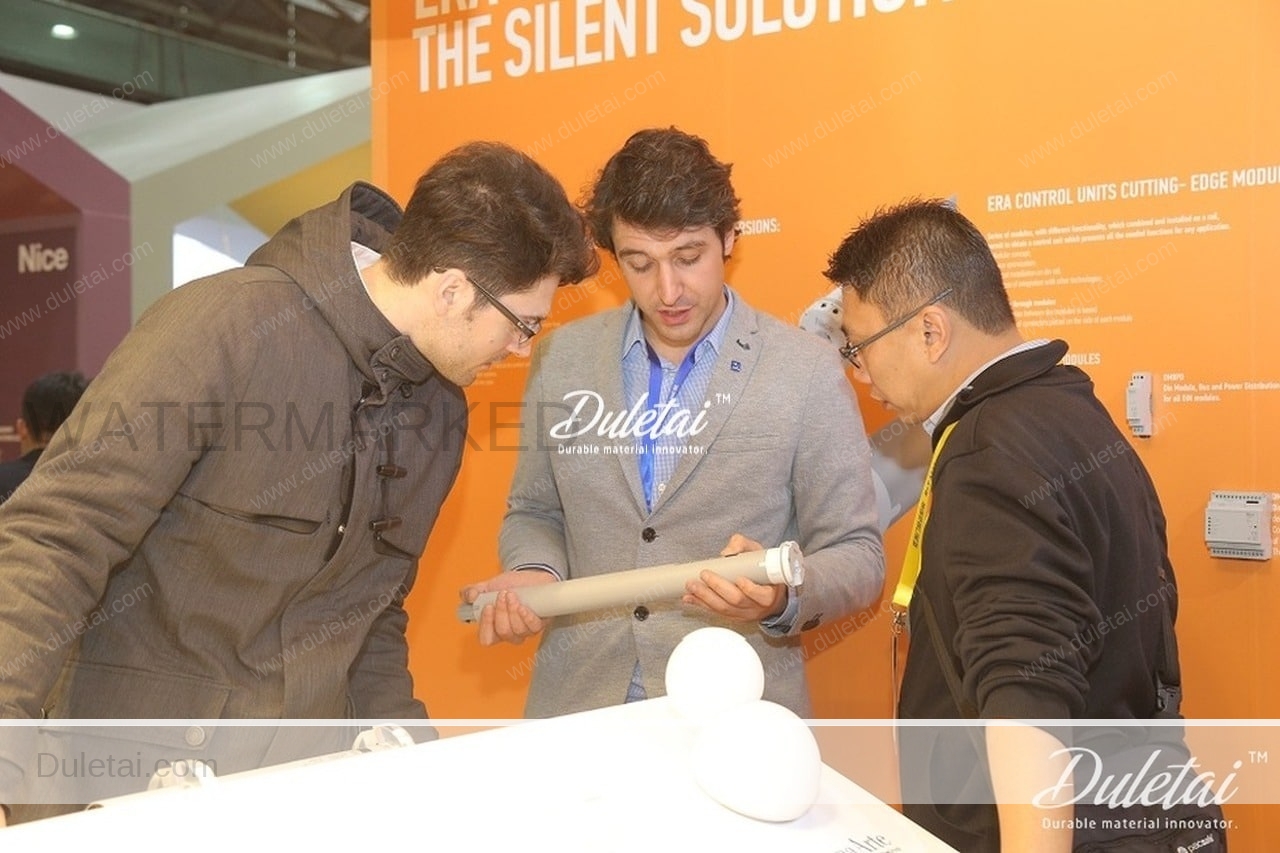
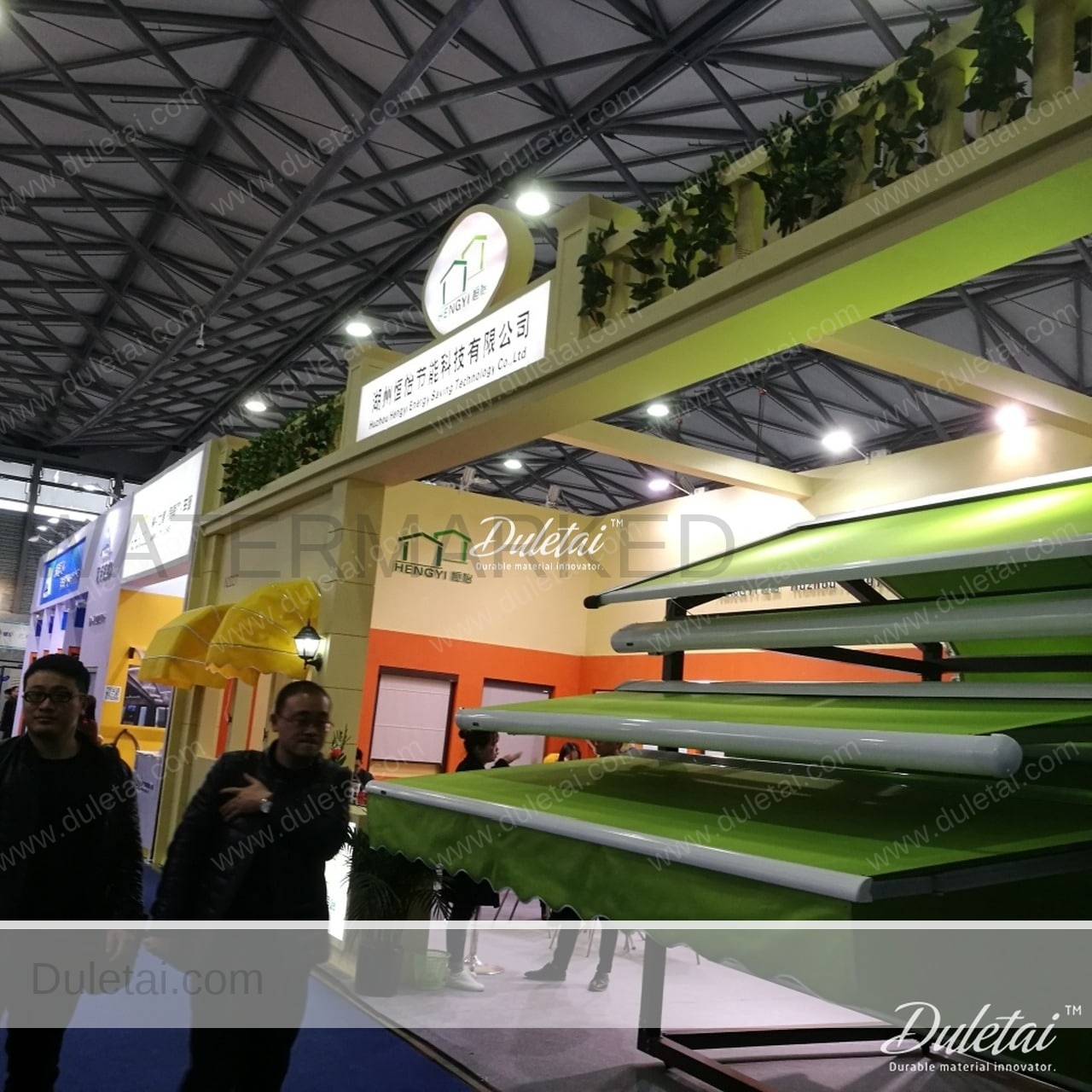
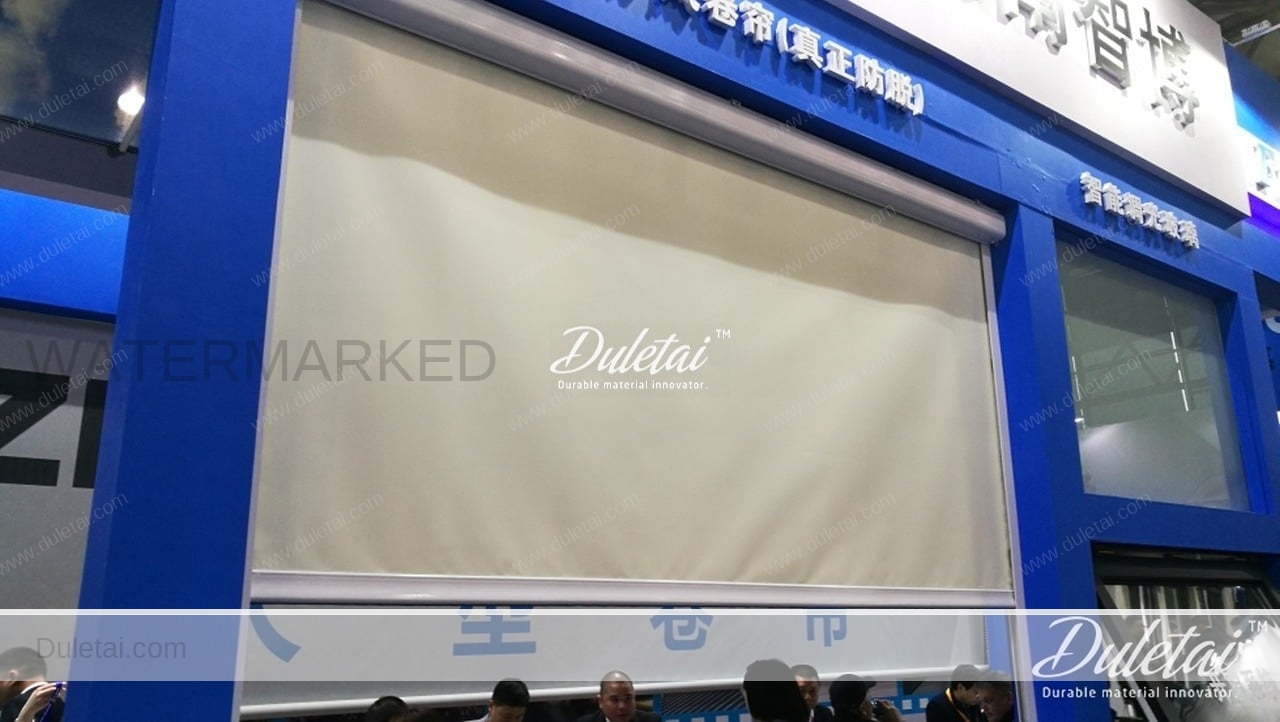
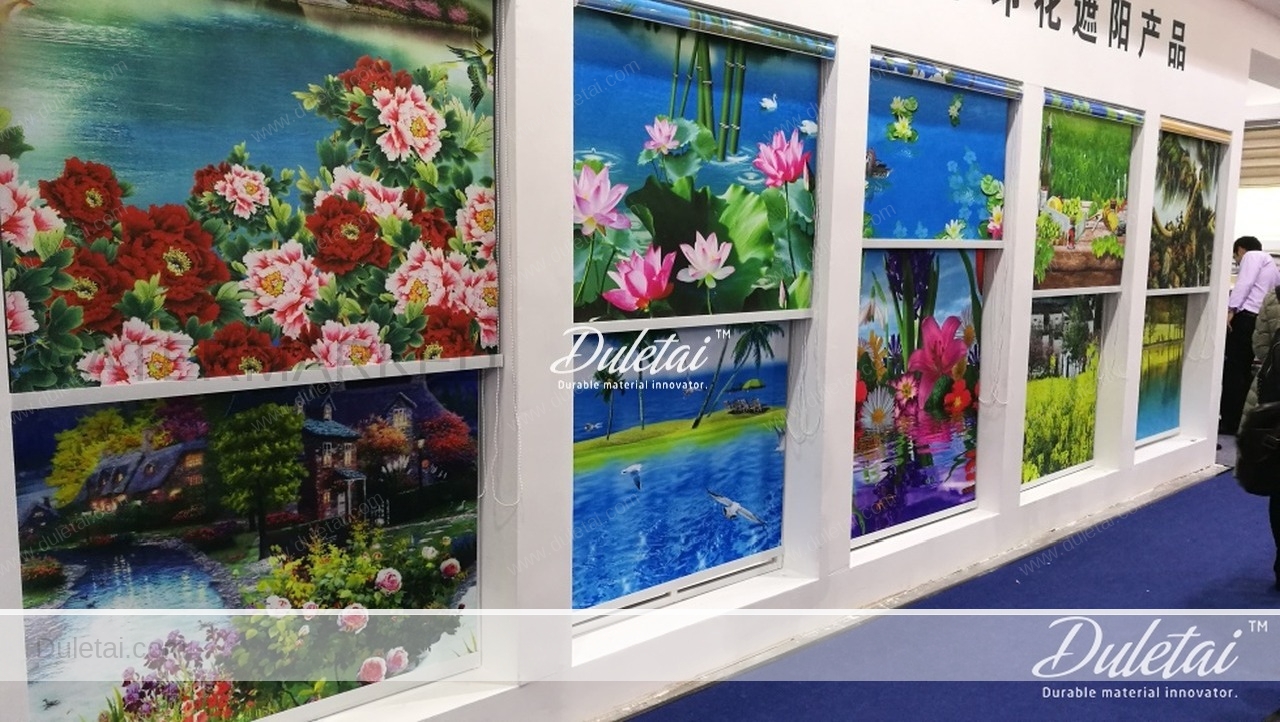
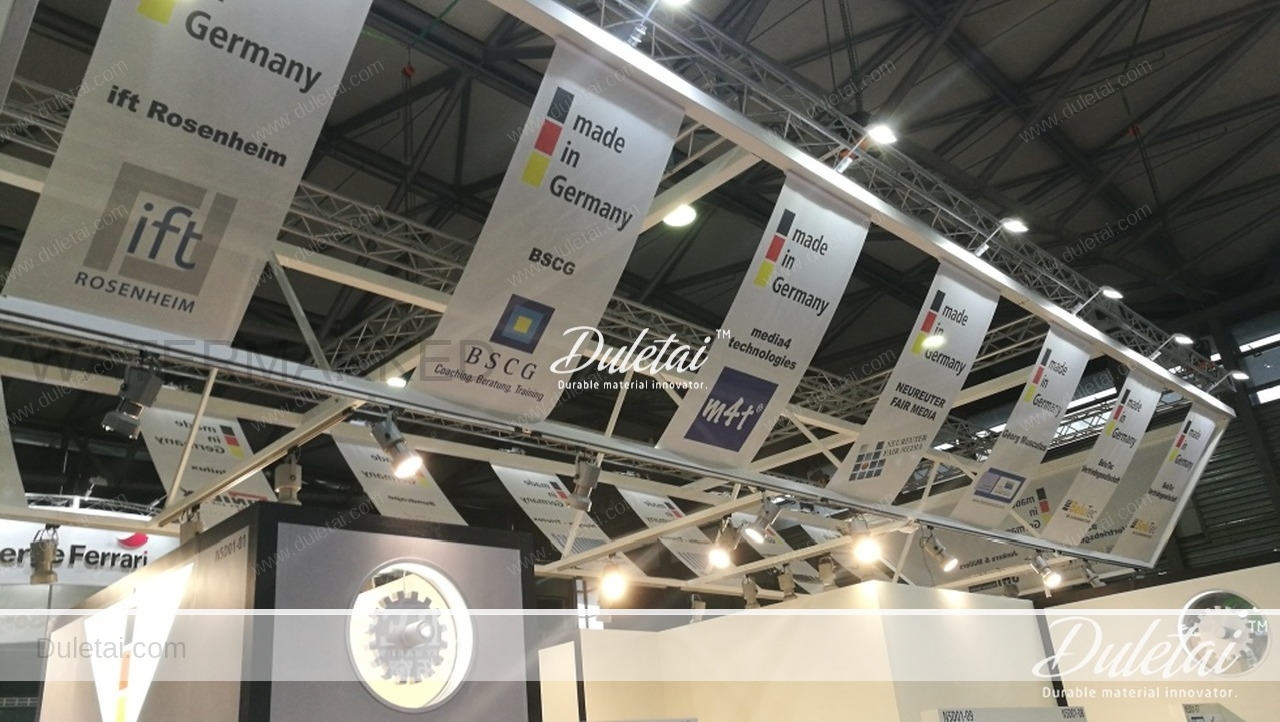
The purchasing volume for China’s window market has reached 4 billion RMB with 20% for Jiangsu, Zhejiang and Shanghai. East China is developing as an important hub for the window industry.
Energy saving, safety and comfort play a big role for windows and for integrated sun-shading solutions for civil buildings. The latest technologies of the global window industry will attract owners, architects and contractors.
The window industry is continuously developing and researching new technologies. Many window and door systems agents are also manufacturers. Some aluminum providers began producing their own window and door systems with standardized sizes, seeking to match the quality of Europe’s energy-saving doors and windows.
Income per person and living standards in China are increasing as are government standards for energy-saving buildings. China has 28 billion sqm of buildings, and many of them, with their doors and windows, are being renovated. Plus, China’s urbanization rate is higher than 50%, and the annual growth of the new construction market exceeds 20%.
In China 55% of doors and windows are made from aluminum, 35% are made from PVC, and 15% are made from steel or wood. The market for plastic windows in North China is significant. Copper and metal windows, often used in renovating old and historic houses, are a smaller part of the industry.
Views: 44
Due to much advancement in solar optical technologies and testing, there is now more information about sunscreen shadecloths than ever before. Information that is useful in determining one of the more pressing questions when deciding on a shadecloth: polyester vs. fiberglass. The following is a report on how polyester core fabric and fiberglass core fabric compare in quality, durability, and fit-for-use. Based on our prior history with fiberglass core, our subsequent experience with polyester core, and test results from independent lab tests, we find that despite its traditional strengths in other products, fiberglass does not match the quality and performance of polyester as a sunscreen.
There are similarities in the polyester and fiberglass yarns. Both types of fabric are coated with vinyl, so the emissivity is virtually identical. Polyester core yarns are extrusion-coated, while fiberglass yarns are dip-coated. Both end up as vinyl-coated yarns woven into a solar shadecloth on a standard loom. The woven shadecloth is then cured under heat and pressure. This process seals in the yarns and creates a non-raveling shadecloth suitable for roller screens. Both fiberglass and polyester core fabrics meet the UK, US, and Canadian fire resistance codes for window coverings.
The major difference between polyester and fiberglass shadecloths is in the strength and durability of their core yarns. For all physical property tests (Grab Tensile Strength, Tearing Strength, Ball Burst Strength, and Abrasion Resistance) polyester core fabric was superior. This can be attributed to the polyester core and a high-quality plasticizer, the same type used on radial tires. This plasticizer also provides excellent resistance to fading, abrasion, mildew, rot, and chemicals. Even when produced in light colors, polyester core will not yellow as opposed to light-colored fiberglass core.
The polyester core construction tends to be more dimensionally stable, performing better in all construction tests. In the Stretch and Recovery Test, polyester core shades retain their original shape and form, particularly if the shades are quite large. The thermoplastic matrix of polyester and vinyl allows a sealed-cut edge, with a protective bead, which is not possible with a fiberglass and vinyl screen cloth. The fiberglass is inert and will not bind to the vinyl coating. Thus fiberglass core gets distorted and does not retain its original shape.
Fiberglass yarn consists of very fine and short-staple fibers. To manufacture these at a given density, it requires the inclusion of far more threads than a Polyester Core screen cloth, resulting in a higher price and no practical advantage over polyester, regardless of the openness factor.
For more information, please call +86 (133) 9683-2665 , or contact our sales representative.
Views: 33
Holographic projection has become a global phenomenon and in the last few years Screen Solutions has seen an overwhelming demand for this technology, as interest increases so do the misconceptions and further need for proper education. Screen Solutions Intrigue line of holographic projection screens are available in both projection film and rigid projection screen surfaces.
Upon reviewing the information on this page and the accompanying pages you will have both a clear understanding and comprehensive grass roots training on the holographic projection screens – what they are and what they are not and most importantly how to use them.
To start there are a number of misconceptions and repeat questions we hear everyday regarding holographic projection screens, by answering these common questions which you may or may not have it will serve as the best way to immerse yourself in holographic projection screen technology. There are several topics and a plethora of practical information regarding holographic projection and best practices;
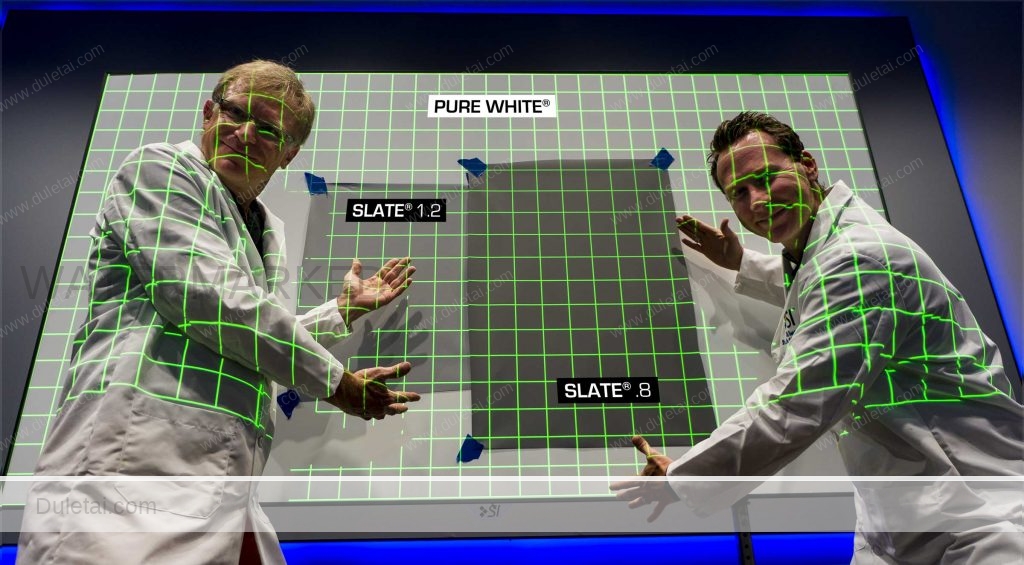
This picture shows you a 120″ Diagonal, Screen Solutions Intrigue Holographic Rear Projection Screen in an Under Armour Retail Store – Pennsylvania. They use this particular holographic projection screen for in-store digital signage and media presentation.
Great for 3D object floating on a Intrigue transparent holographic projection screen.
3D graphics floating on a Intrigue transparent holographic projection screen.
3D wireframe graphics on a Intrigue Rear Projection Screen

